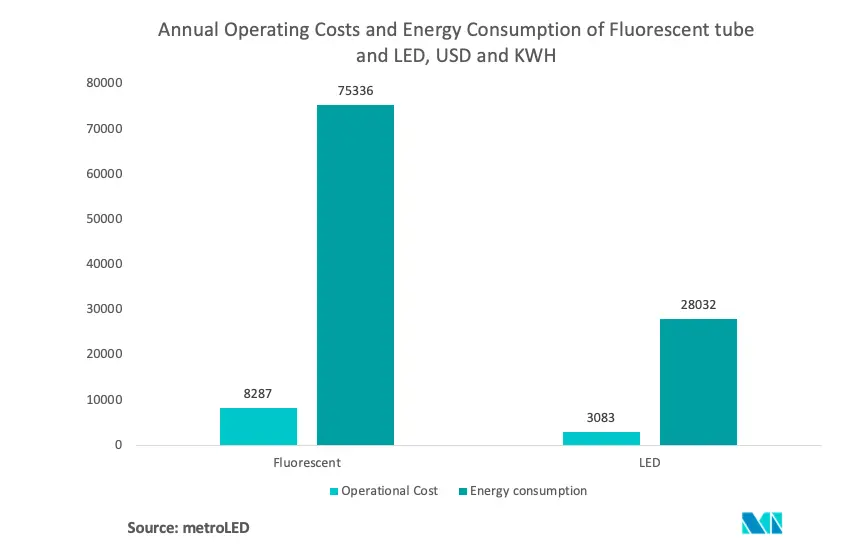Market Trends of Asia-Pacific Hazardous Lighting Industry
This section covers the major market trends shaping the APAC Hazardous Lighting Market according to our research experts:
Rising Demand for Cost-effective LED Lighting Solutions
- LEDs operate on a lower wattage and consume less energy than older lighting technologies in hazardous areas. LEDs help in cutting down utility costs, which is important for any location, especially for a large locations with a lot of fixtures installed.
- With lower voltage, the LED lighting provides higher lumen output , which can avoid accidents, lower heat as 80% of the energy from LEDs is consumed to create illumination, durability as LEDs last four times longer than other options, and better versatility in specs.
- According to United Nations report, Asia stands out as the region with highest gains in electricity savings and avoids CO2 emmissions. UNEP in the frame of enlighten program estimates that in the absence of new policies, 57% of the lighting energy demand would come from Asia. Therefore developments in Asia are critical for LED market growth.
- The operational costs of the LEDs, when compared to other lighting technologies, is less than 50%. Asia-Pacific region has been exporting to European region, MEA region and North American region,etc. Thus savings in utility helps in profitability and expansion of production.


